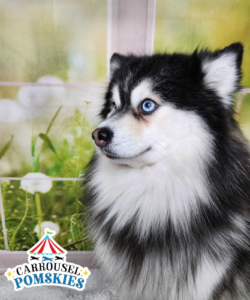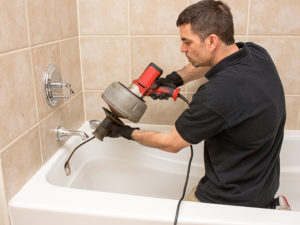Local movers specialize in moves within a specific area. Their familiarity with the neighborhood is a valuable asset, as they can provide insider tips for everything from restaurants to childcare services. Moreover, they can also recommend companies with a high level of customer satisfaction.

When selecting a moving company, consider their costs, insurance coverage, and customer service. In addition to these factors, ask for references and seek recommendations from friends and family. Let Movers Meridian Idaho provide the expert help you need.
Local movers are typically less expensive than long-distance movers, because they charge hourly rates and don’t have to travel as far. They also offer personalized service, which is essential in a move. Additionally, they are familiar with the area, and can navigate traffic patterns more easily than long-distance movers. As a result, they can often accommodate last-minute requests and provide a faster turnaround.
Various factors can affect the cost of local moving services, including the type of residence and how much furniture is being relocated. For example, many New Yorkers live in studios or small one-bedroom apartments, which generally have fewer items to transport than larger homes. In addition, movers may need to take a virtual survey of the home to make an accurate estimate. If possible, you should declutter your belongings to reduce the number of boxes and large furniture pieces that need to be moved.
Another factor is the time of year. Summer months tend to be busier, and prices can rise during this period. To save money, consider moving during the off-peak season.
Additional services, such as professional packing and unpacking, furniture assembly, electronics disassembly, and storage solutions, can increase your costs. In addition, high-quality moving boxes can be pricey. To cut down on these expenses, you can purchase cheap boxes from your local hardware store and enlist the help of friends to assist with the move. If you do decide to use a full-service local mover, you can ask them about their pricing structure and what’s included in the package. In most cases, the company will offer a quote before the work begins. This will ensure you’re aware of the total moving costs and can plan accordingly.
Reduced stress
Local movers provide a variety of services to reduce the stress of moving. They can handle everything from packing to transporting, allowing you to focus on other aspects of the move. This level of service is especially helpful if you don’t have time to pack your items yourself, and it can also save you money in the long run. It’s important to choose a legitimate company that is licensed and insured, as this ensures the safety of your belongings during transit.
Another benefit of working with local movers is their familiarity with the area. This can help them avoid unforeseen obstacles during the move, such as traffic delays or parking restrictions. This can reduce the overall cost of your move, as they will be able to take the most efficient routes.
Moreover, local movers can provide assistance with assembling and disassembling furniture pieces, if necessary. They can also wrap and pad large pieces of furniture to protect them from damage during transportation. Moreover, they can offer storage options if needed, which is convenient for those who are unable to unpack all their items at once.
Local movers are more likely to work with your schedule than national movers, which operate on a nationwide basis. As a result, they can often accommodate moves on weekends and during holidays. Furthermore, they are more flexible with their rates, as they charge by the hour rather than per item or weight. This makes them a cost-effective choice for shorter moves, especially when the move takes place during the winter. In addition, they will be able to save you money on the costs of fuel and other transportation expenses by operating within a limited geographical area.
Personalized service
Local movers have the flexibility to tailor their services to your specific needs. They can offer full service packing, arranging storage if needed and cleaning before the move and after. They can also assist with organizing your new space, moving heavy objects, and providing trash pickup services. They can even help you disconnect utilities in your old home and reconnect them in your new one. They understand that a move is more than just a relocation; it’s a transition of dreams, hopes and memories. That’s why they always strive to provide you with personalized service and an excellent customer experience.
Smaller local companies can be more flexible with their services and provide faster turnaround than larger national ones. They are able to respond quickly to last-minute requests and go above and beyond to meet your specific moving needs. They also have the ability to handle unexpected situations quickly, such as unforeseen delays or weather-related issues.
When choosing a local moving company, make sure to research the companies thoroughly and compare prices and services. Look for online reviews, testimonials, and references. Legitimate local movers will be happy to provide you with references. Also, ask about the insurance coverage they offer. Make sure you’re covered for both damage and loss of items.
Many local movers are dedicated to giving back to their community by sponsoring events and participating in charitable drives. They’re also committed to using environmentally-friendly materials and optimizing their routes for fuel efficiency. This allows them to minimize their ecological footprint while helping you move into your new home. In addition, they’ll offer flexible scheduling and responsive customer service. This way, you can rest assured that your move will be a pleasant and stress-free experience.
Valuation coverage
If you’re planning a local move, it is important to understand the different types of valuation coverage offered by your local movers. It is also important to be aware of your options and obligations with respect to the type of coverage you select. In addition, you should be aware that some items of extraordinary value may require a separate, higher level of coverage or an appraisal.
The United States government requires that all licensed moving companies offer valuation protection to their customers. This is a safety net that covers the value of your belongings in the event they are lost or damaged during the move. There are two basic types of protection: released value protection and full replacement value protection. Released value protection is a bare minimum and typically includes $0.60 per pound for any item that is lost or damaged during the move. Full replacement value protection offers a more comprehensive coverage and reimburses you for the actual cash value of any lost or damaged item.
The cost of these plans varies between states and individual movers. In most cases, the mover will include released valuation in their base rate and charge a small additional amount for full replacement. However, you should note that this is not insurance and does not cover damages or losses due to acts of God or fire. In the case of such an occurrence, insurance would be more appropriate and will generally pay out up to a policy limit. For this reason, many movers recommend that you consider purchasing an additional insurance policy to protect your belongings during the move. Often, this is the most economical way to insure your valuables against damage and loss.
Large trucks
Relocating, even over short distances, can be an overwhelming experience for anyone. It involves a complex and time-consuming process, from packing to transporting items to your new location. Local movers have the skills and expertise to help make your move as stress-free and easy as possible. This includes offering various insurance options that ensure your belongings are safe and secure throughout the relocation process.
The large trucks used by local movers are designed to minimize the number of trips needed to transport your belongings from your old home to your new one. This allows them to finish your move in a day or two, which is much quicker than doing it yourself. Additionally, they use professional-grade equipment and supplies to ensure the safety of your items during transport. These include furniture blankets and dollies, which make it easier for movers to carry heavy items without damaging them.
Another advantage of using a moving company is their availability of extra services, such as storage. This eliminates the need to rent a separate storage unit and manage your own transportation needs. In addition, local movers often offer storage pickup and delivery, which makes the entire moving process more convenient.
Using a large truck for your move is an excellent option, as it provides more space than a small truck or a rental truck. These trucks range from 14 to 17 feet in length and can accommodate items from a studio apartment or a one-bedroom house. They are also more fuel-efficient than smaller vehicles. Additionally, they are weather-proof and can withstand harsh winter conditions. You should also consider using furniture pads and blankets to protect your items from scratches or dents, and load heavier items at the bottom of the truck.








